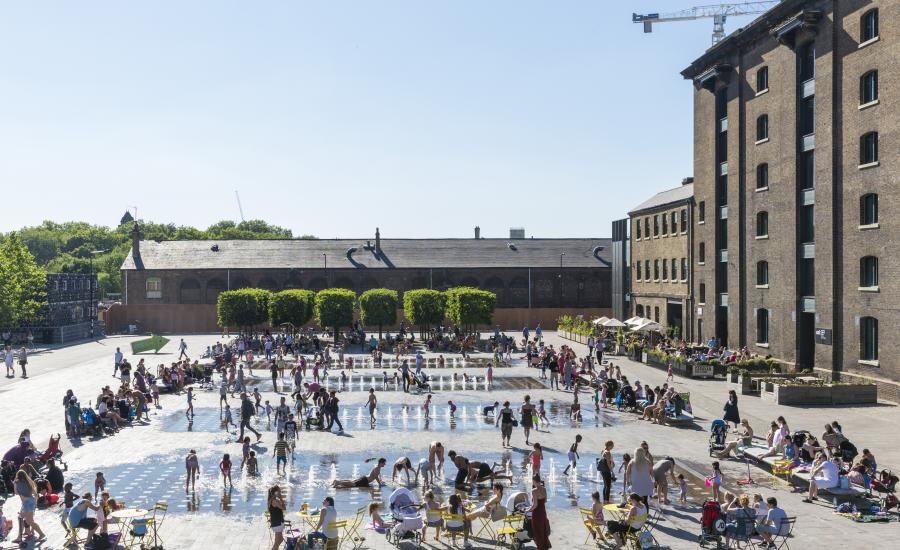Privately owned public spaces
Are POPS the future of London’s public realm asks Rory Olcayto ahead of the Margaret Howell debate this October
From Wimbledon Common to Hyde Park, Hampstead Heath to Epping Forest, as Observer architecture critic Rowan Moore reminded us in the 2016 Open House Guide, “they are there to be enjoyed (because) of battles fought against their enclosure and development”. Public space in London has often been hard won, and almost always hard fought for.
Yet in 2019, the best new public space – or rather the seemingly most flocked to, most vibrant, most talked about public space in London – isn’t public at all. Rather, it’s a POPS – a privately owned public space, run by the neighbourhood developer Argent. It’s called Granary Square, and it’s slap bang in the middle of London, the very heart of the new Kings Cross.
Granary Square has been up and running since 2012. Designed by Townshend Landscape Architects, it occupies the land in front of Lewis Cubitt’s granary building (designed in 1852 to store Lincolnshire wheat for London’s bakers) that now houses the world-class art school Central St Martin’s.
It’s big, around 8,000m2, similar in size to Trafalgar Square. Both squares are famous for their fountains – although at Kings Cross they encourage citizens to linger on a hot summer day while Trafalgar’s Lutyen-designed efforts form part of a wider urban plan for the square that subtly limits potential for “riotous assembly” – a perennial concern for the rulers of London – of all capital cities – down the ages.
You can find POPS everywhere in London. Another long-established POPS is MORE London, the flagstoned-expanse of bankside land in Southwark on which City Hall is built.
If you’ve ever wondered why you don’t see protests outside Norman Foster’s ‘crash-helmet’ HQ for the GLA – placards targeting the Mayor in the same way we see countless political gatherings in Westminster at Parliament Square – it’s because MORE London’s owner, doesn’t permit them to happen.
The quandry is clear: in some cases POPS make better use of the public realm, giving the public more of London to enjoy together – anyone who compares and contrasts the spatial freedoms offered by Granary Square with those of London’s most famous piazza at Trafalgar gets this. On the other hand, POPS can limit the kind of behaviour we have come to take for granted in British culture and public life – the right to protest, for example, a point made clearly at MORE London.
And it’s this rub – this very obvious conflict of interests – that set the stage for our next event hosted by Margaret Howell, POPS culture: are privately owned public spaces the future of London’s ‘public’ realm?

